Abstract
A 2-year examination for Salmonella was conducted in the gulf of Aarhus, which receives waste water from local industries and from about 100,000 inhabitants. An approximately rectilinear relationship is shown between the most probable number of Escherichia coli and species of Salmonella. Salmonella species can be demonstrated with the same frequency in inlets and outlets of the treatment plants. Data on the distribution of Salmonella types in the gulf of Aarhus and in Oeresound outside Copenhagen (1 million inhabitants) in 1966 and 1968 and the distribution in man, animals, and feeding stuff during the period 1960 to 1968 in Denmark as a whole are shown. This indicates that the classical chain of infection (feed stuff-animals-food-man) is without importance in Denmark, and that a great nlumber of the human cases may be due to increasing communication, because severa of the demonstrated types have been found neither in feed stuff nor in animals in this period. We suggest that E. coli counts, currently used in examination of waters receiving effluents of streams and sewage treatment plants, should be supplemented at intervals with qualitative Salmonella examinations.
Full text
PDF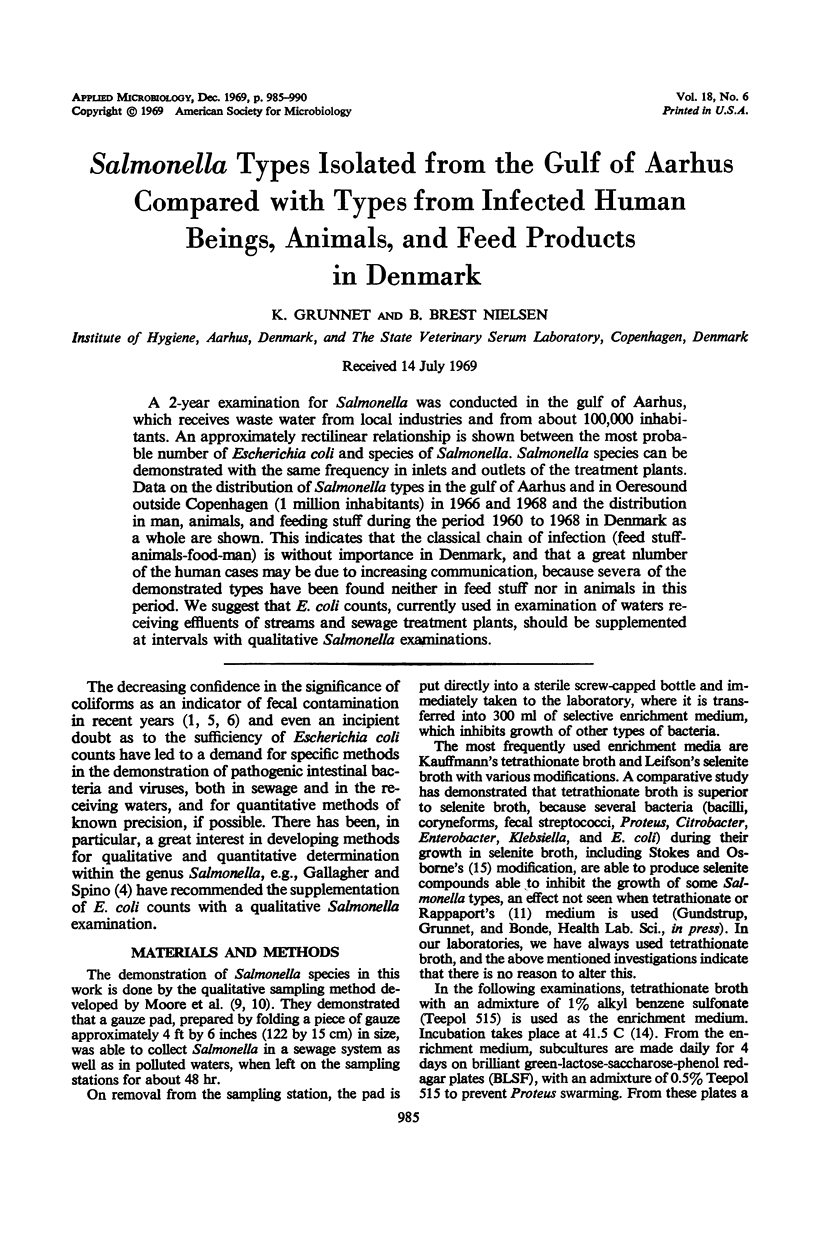

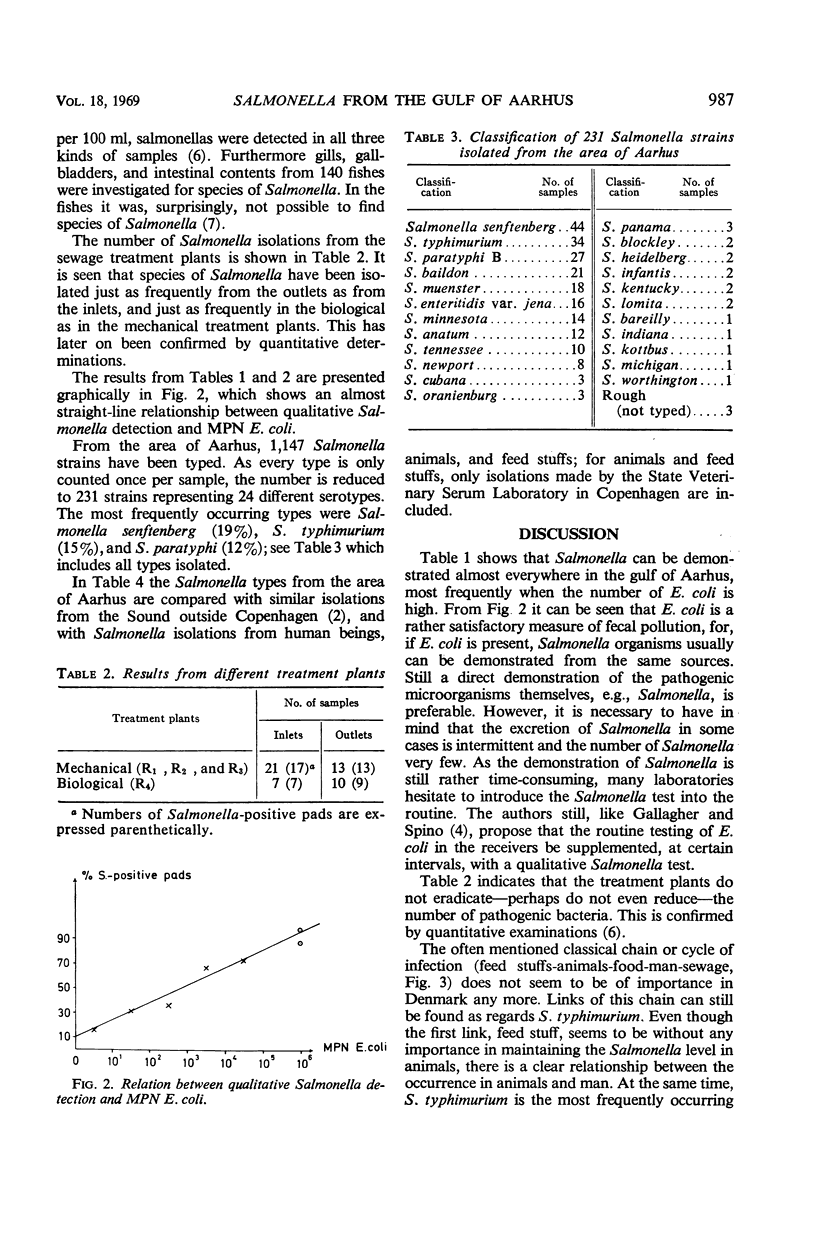
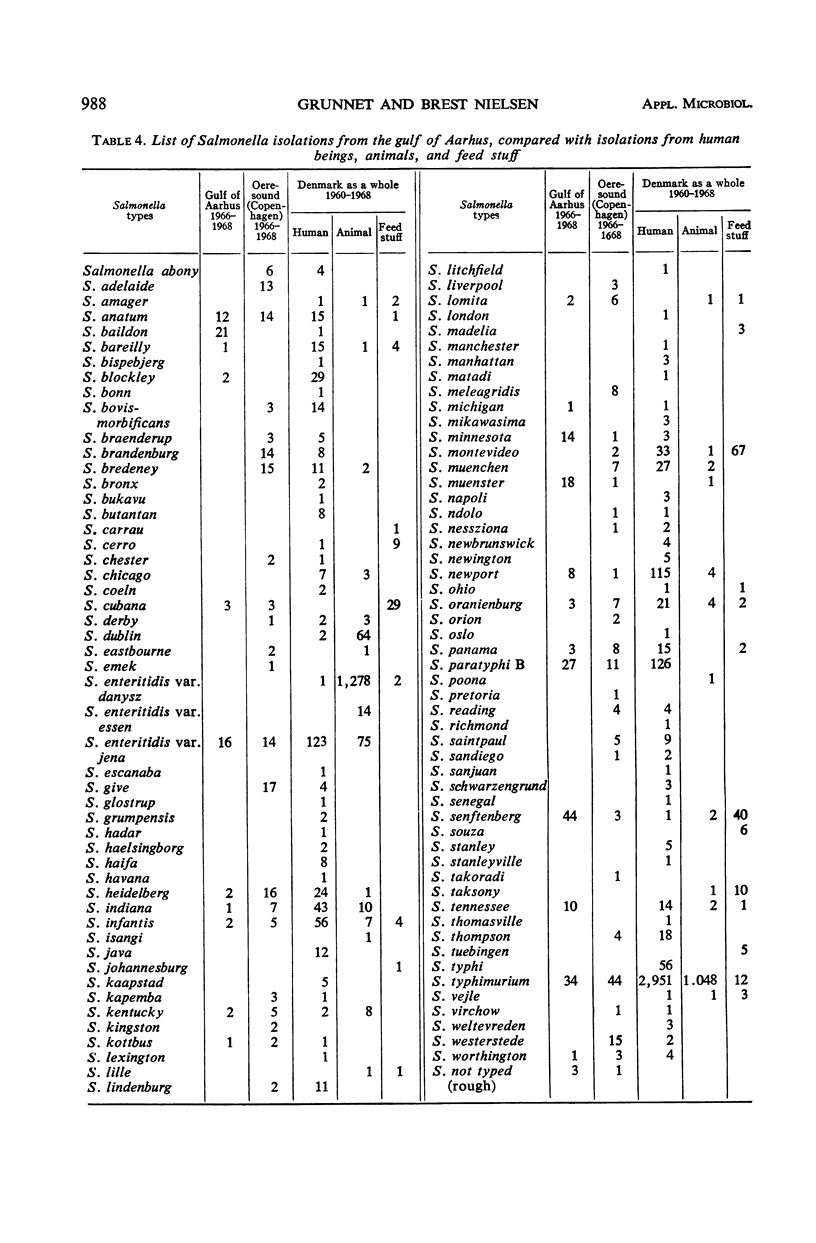
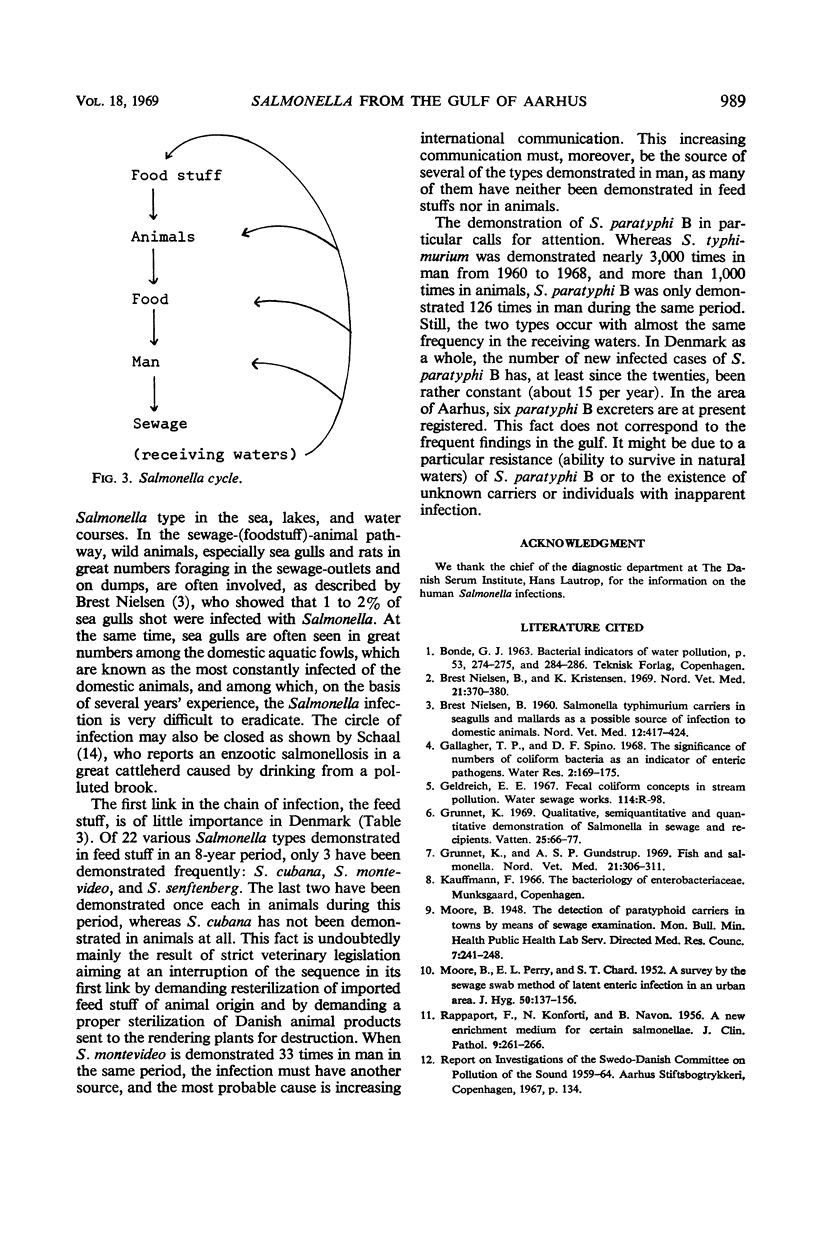
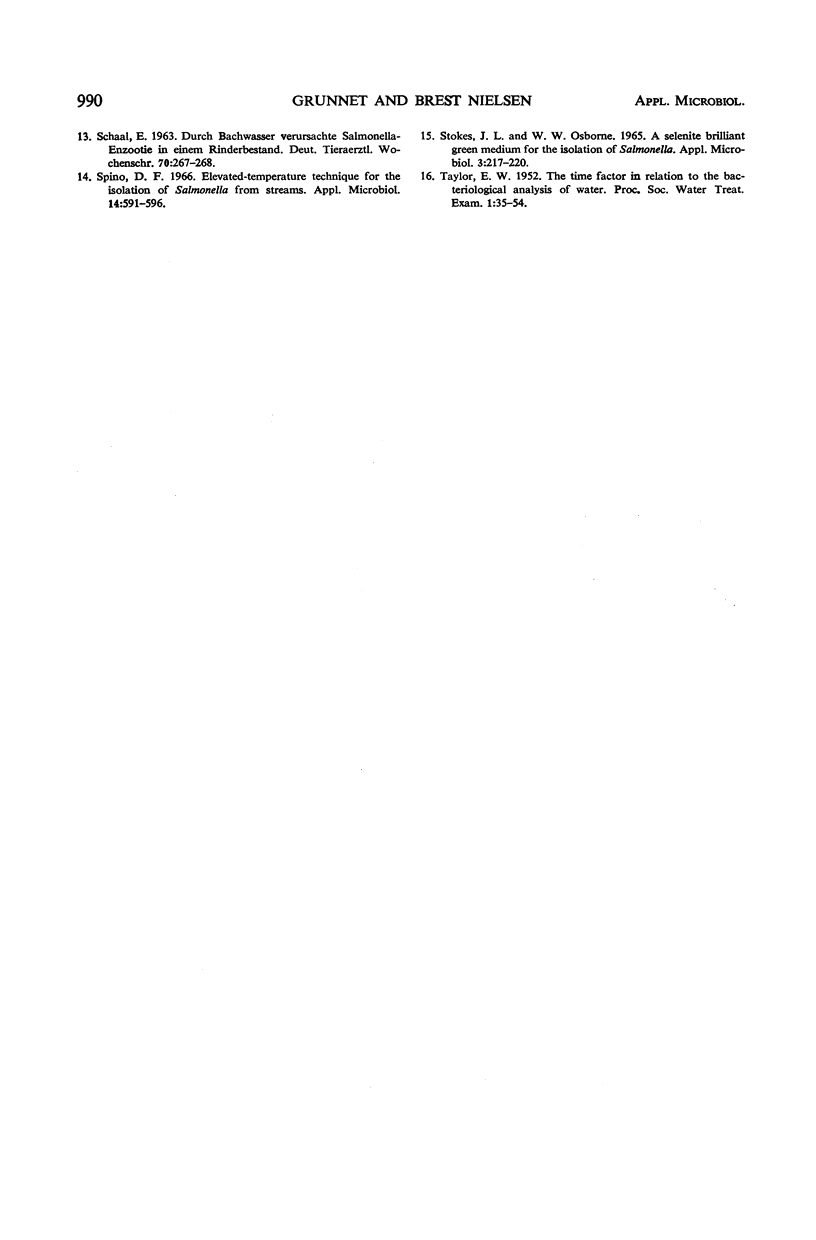
Selected References
These references are in PubMed. This may not be the complete list of references from this article.
- Calnan J. S., Reis N. D., Rivero O. R., Copenhagen H. J., Mercurius-Taylor L. The natural history of lymph node-to-vein anastomoses. Br J Plast Surg. 1967 Apr;20(2):134–145. doi: 10.1016/s0007-1226(67)80030-4. [DOI] [PubMed] [Google Scholar]
- KONFORTI N., NAVON B., RAPPAPORT F. A new enrichment medium for certain Salmonellae. J Clin Pathol. 1956 Aug;9(3):261–266. doi: 10.1136/jcp.9.3.261. [DOI] [PMC free article] [PubMed] [Google Scholar]
- MOORE B., PERRY E. L., CHARD S. T. A survey by the sewage swab method of latent enteric infection in an urban area. J Hyg (Lond) 1952 Jun;50(2):137–156. doi: 10.1017/s0022172400019501. [DOI] [PMC free article] [PubMed] [Google Scholar]
- STOKES J. L., OSBORNE W. W. A selenite brilliant green medium for the isolation of Salmonella. Appl Microbiol. 1955 Jul;3(4):217–220. doi: 10.1128/am.3.4.217-220.1955. [DOI] [PMC free article] [PubMed] [Google Scholar]
- Schaal E. Uber eine durch Baschwasser verursachte Salmonella-Enzootie in einem Rinderbestand. Dtsch Tierarztl Wochenschr. 1963 May 15;70(10):267–268. [PubMed] [Google Scholar]
- Spino D. F. Elevated-temperature technique for the isolation of Salmonella from streams. Appl Microbiol. 1966 Jul;14(4):591–596. doi: 10.1128/am.14.4.591-596.1966. [DOI] [PMC free article] [PubMed] [Google Scholar]


